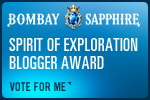I understand your attraction to the Pacific Seacraft sailboats, the Dana 24 and the Flicka 20. They are sweet-looking little boats, and in the proper circumstances, I am sure they would be enjoyable to sail. In fact, each is small enough to be trailerable, which opens up all kinds of sailing possibilities. Being small, they are also less expensive to purchase and maintain than larger sailboats.
Unfortunately, for me at least, that is where the advantages end. Smaller boats are naturally slower. This is partly a function of hull shape. Because a boat's beam needs to be wide enough to accommodate a comfortable cabin, smaller boats end up being shaped more like stout rowboats than sleek canoes, with a corresponding loss of performance. The smaller hull size lends itself well to the incorporation of a full keel, which helps with trailerability but reduces maneuverability and adds surface drag.
Smaller sailboats naturally accommodate smaller crews and offer less storage space, so they are not well suited to long-distance cruising, which might require rotating watch shifts and enough food and water to feed a hungry crew for an extended period. You mentioned that someone sailed a Dana 24 or a Flicka 20 from California to Tahiti, but I'll bet that it was just one person, that the boat was loaded to the gills with provisions, that the passage took several months, and that he was lucky to have favorable wind and wave conditions most of the way.
What I am leading to here is the issue of safety. I have been on small sailboats in bad conditions, and it is no fun. It can be downright scary. When the waves are huge and the wind is howling, there is so much motion in a small sailboat that it can be difficult to make any headway at all. And a boat that is not moving forward is like a raft, at the mercy of the elements. A larger sailboat, instead of riding up and over the waves, will plow through them. Its greater length and weight give it better stability and smoother motion, which keeps it making headway in all but the worst conditions.
My recommendation to you is that after you have taken the sailing lessons you have scheduled for July, you should evaluate what type of sailing you would like to pursue. If it's sailing inland lakes or coastal cruising, then a Dana 24 or Flicka 20 might be the perfect boat for you. But if you dream of crossing oceans, you should seriously consider a larger sailboat, one more in the 36- to 50-foot range.
Best of luck to you as you embark on one of life's most rewarding journeys!

 Raising Charlie: The Lessons of a Perfect Dog
Raising Charlie: The Lessons of a Perfect Dog




